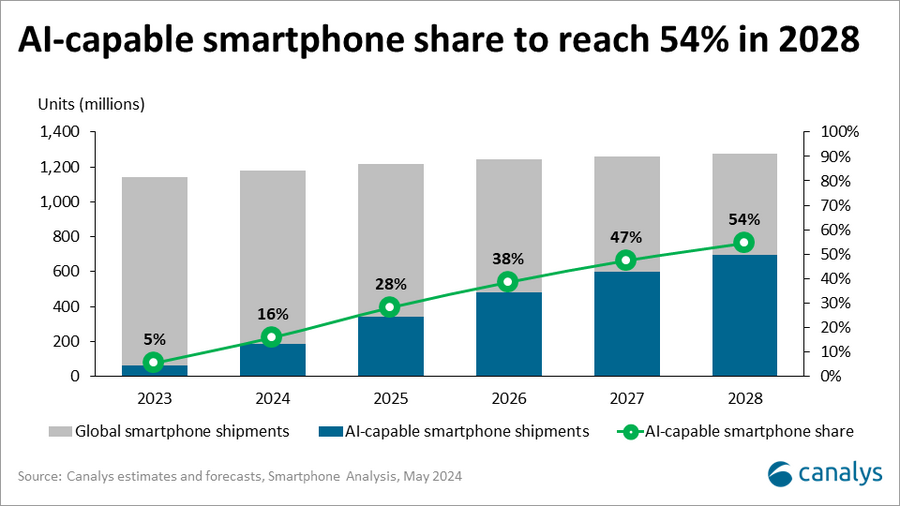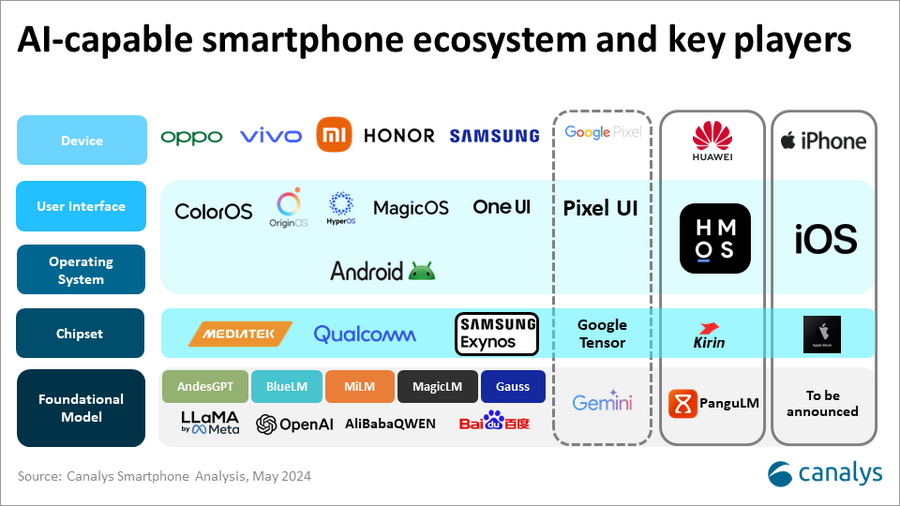A recent Canalys report looks into the impact the introduction of AI-capable smartphones have on the overall market in 2024 and beyond, and how it is redefining the future of mobile technology.
The transformative potential of AI-capable smartphones heralds a new era in the mobile industry, driven by advancements in generative AI technologies.
A recent report from Canalys focused on the implications and opportunities of integrating sophisticated AI capabilities directly into smartphones, forecasting that – over the next three to five years – these innovations are expected to redefine consumer interactions and operational efficiencies, providing a competitive edge to early adopters in the industry.
Below is a summary of the 5 key insights from the report:
1. User experience expectation of AI-capable smartphones evolves with technological advances
Several core hardware capabilities are essential in defining AI-capable smartphones. Specialized processors such as ASICs, GPUs, and other components should be optimized to effectively run on-device AI models and workloads. As technology progresses, software and service capabilities will play an increasingly crucial role, differentiating AI smartphones not only by their hardware but also through their ability to seamlessly integrate and update AI-driven functionalities.

2. Significant market growth for AI smartphones
In 2024, 16% of global smartphones will be AI-capable, which will grow exponentially to 54% by 2028. The AI-capable smartphone segment is growing at a 63% CAGR (2023-2028) driven by consumer demand for enhanced functionalities such as AI agents and on-device processing. This shift is anticipated to occur first among premium models, with a gradual adoption in mid-range smartphones, reflecting broader market trends towards advanced mobile technology.
3. Industry leaders spearhead the adoption of AI technologies
Major global players such as Apple, Google, and Samsung, as well as leading Chinese players HONOR, OPPO, Xiaomi and vivo are at the forefront of integrating AI capabilities into their devices. Their strategies vary from developing proprietary AI chips to enhancing ecosystem integrations that leverage AI for improved user experiences. These developments are technical and strategic, involving significant investments in hardware and software to maintain a competitive edge.

4. Expanding AI revenue models
Integrating on-device AI opens new avenues for revenue generation beyond traditional smartphone sales. On-device AI enables new business models, including subscription-based services for premium AI features, personalized advertising, and enhanced app functionalities that leverage on-device processing. These models diversify revenue streams and drive deeper customer engagement by offering continuously improving and personalized user experiences.
5. Consumer interest and transparency
The Canalys Consumer AI Inclination Index highlights a growing consumer interest in smartphone AI capabilities. However, this interest is tempered by concerns over privacy and data security, hence it is critical to consider transparency and responsibility in AI implementations. Clear communications regarding data usage, the functionality of AI features, and adherence to privacy regulations are critical in building consumer trust and acceptance. Addressing these concerns directly can mitigate apprehension and foster a more receptive market environment.
The report concluded that these strategic insights are foundational for maintaining a competitive advantage and driving growth in a landscape increasingly shaped by sophisticated AI integration.
Comprehensive analysis, market projections, strategic recommendations, and much more are available by accessing the full and complimentary “Now and Next for AI-Capable Smartphones” report.
